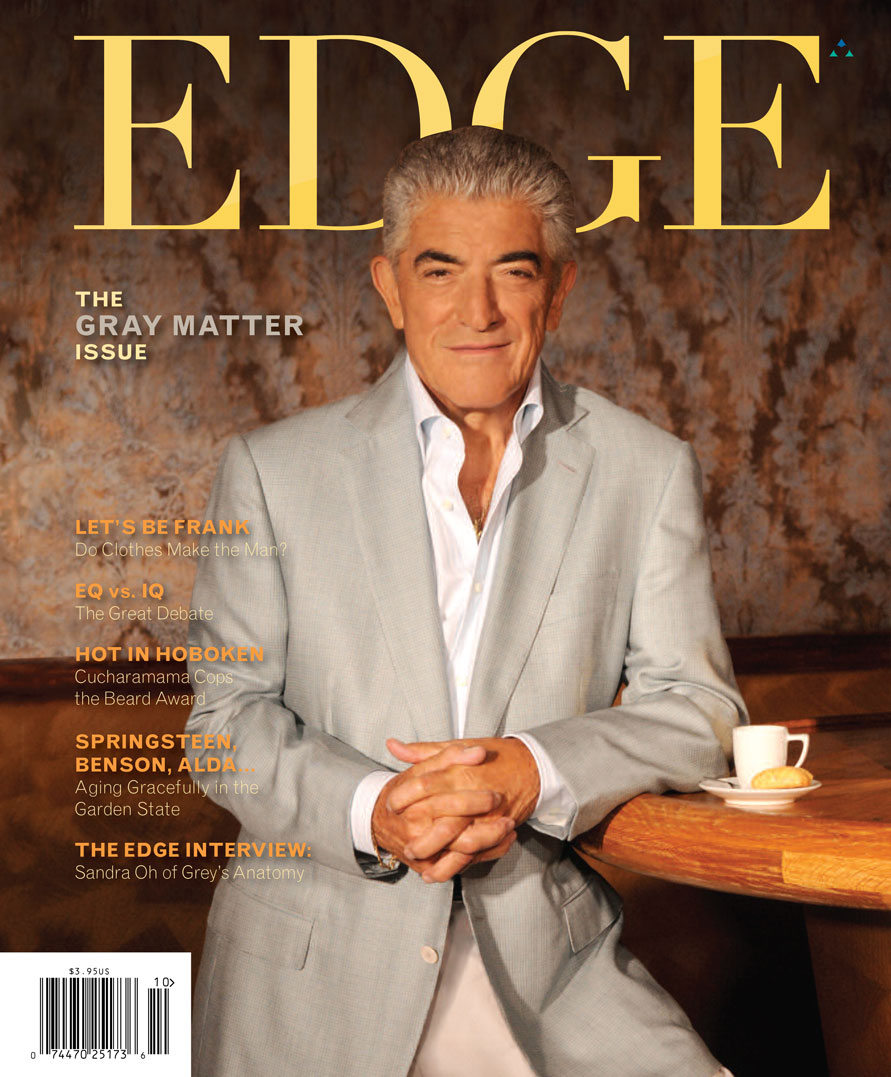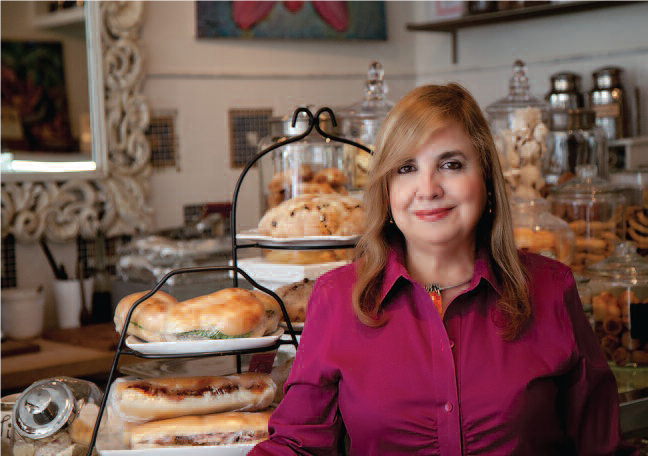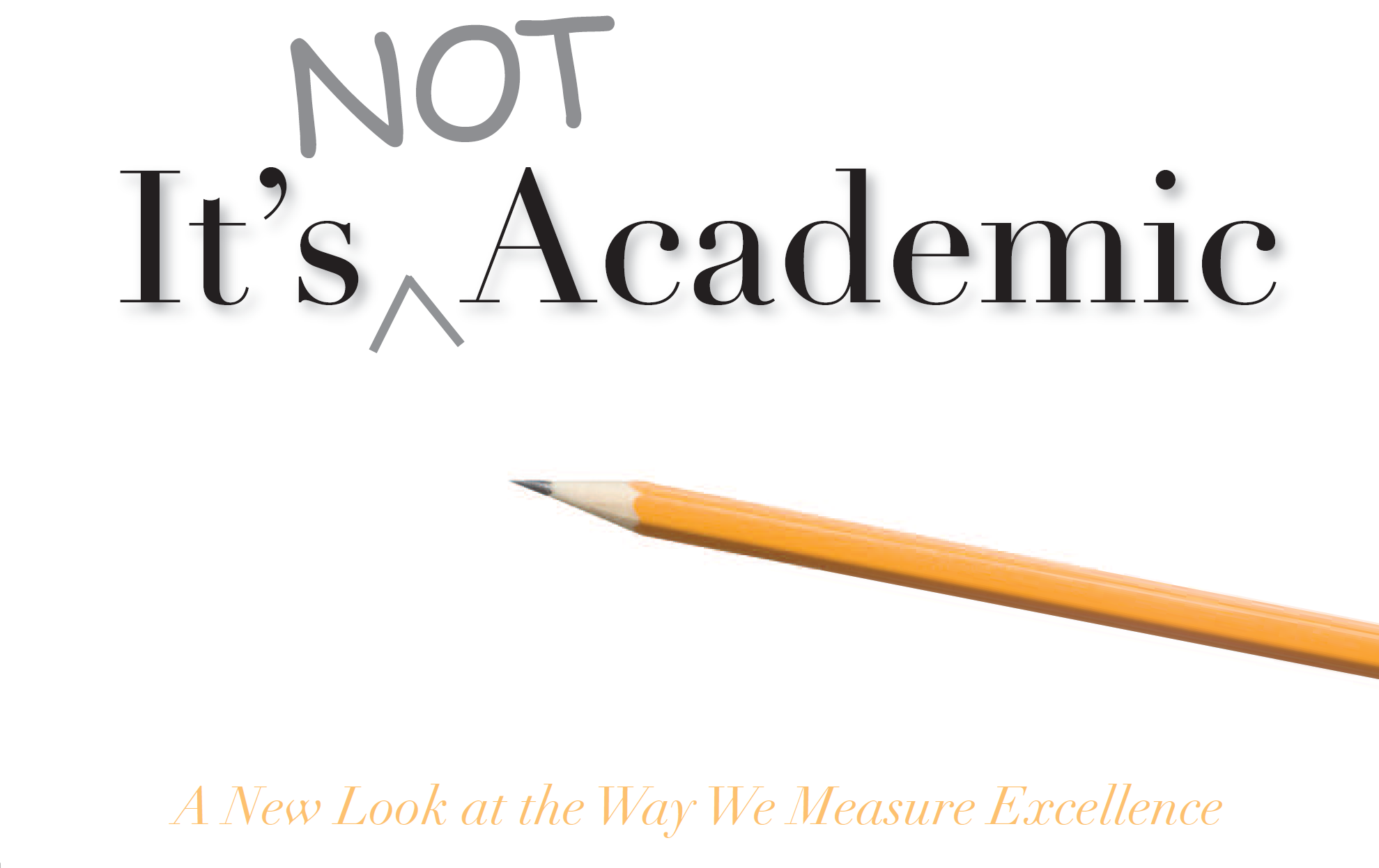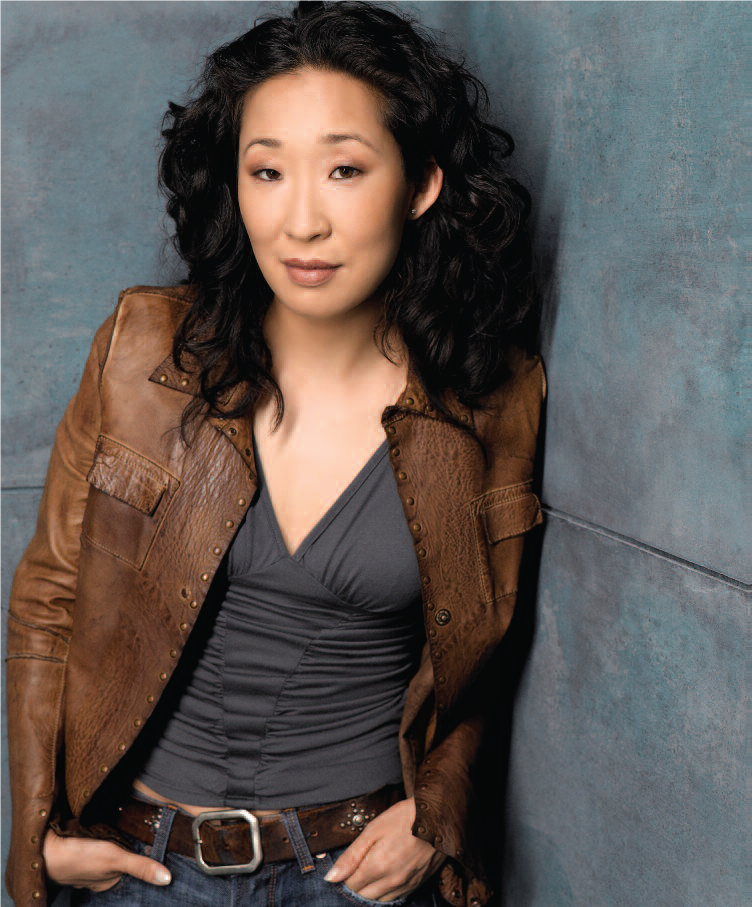“Cucharamama is the image of its chef-owner: visionary, scholarly, driven to educate.”

Photo credit: Joseph Corrado
Before there were more chefs than size-2 starlets on TV, there was Maricel E. Presilla, doctor of medieval Spanish history, making her students at Rutgers late to their next classes by feeding them irresistible snippets from the Latin world’s diverse culinary cultures. Dr. Presilla’s lectures were like tapas: bites that whet the appetite for more. She’d pluck them from her vast pantry of knowledge and drop them into the topics of the day, effectively setting the table for the bounty of Latin cuisines soon to come in New Jersey. Her students circa the 1980s and ‘90s are her “students” now. But Dr. Presilla’s classroom today is a restaurant kitchen—two, specifically, and both in Hoboken: the Pan Latin Zafra, born in 2000, and the high-style South American Cucharamama, 2004. (There’s also an atelier-cum-store exploring and selling Latin American provisions, Ultramarinos, opened in 2010.)
The professor is a chef, but still a scholar, still a visionary, still a teacher at heart. She is, arguably, the most respected Latin chef in America, the winner of the 2012 James Beard Award for Best Chef in the Mid-Atlantic for her work at Cucharamama. Just as her body of work transcended her classroom at Rutgers, so has her culinary expertise transcended her restaurants’ kitchens by way of critically acclaimed cookery books, articles in magazines and keynotes at conferences where all manner of intelligentsia convene. Maricel Presilla even has cooked at the White House. On this night, Presilla’s Cucharamama is the center of the culinary universe for me. I first was here in the spring of 2004, a week before Cucharamama officially opened its doors, to see the wood-fired oven Presilla was using to cook chicken, suckling pig, lamb, breads, peppers and arepas, the massive jars of marinating olives and escabeche of eggplant, and the rustic tools such as the batan, a grinding stone from the Andes her crew employed to muddle spices.
The corner storefront in Hoboken had been transformed into another world, one where respect for South America’s as-yet-unheralded cuisines reigned. That’s still the way at Cucharamama—which means “mother spoon”—and I find decades worth of periodic conversations with Presilla, as professor, as author, as chef, weaving through my mind as I dig into dishes I’ve both had before and am trying for the first time. There’s octopus, more tender than a strong sea creature deserves to be, awash in a smoky, rather fruity panca pepper sauce balanced by the salinity of black olives. There’s calamari done Peruvian style, its crunchy crust giving way to silky squid sprayed with a tangy, faintly heat-licked tamarind-rocoto chile sauce.
There are nuggets of chicken, coated in nutty, crackling quinoa, mouthfuls that would be pleasing to any child who tries them. Cucharamama’s soups are legend, and I’m reminded why as the Ecuadorian creamy corn soup blended with plantains and studded with shrimp rolls over my tongue. Ah! And there are little plantain-filled empanadas on the side! Reverie. The white bean and tomato soup, pureed to an ultra-thick creaminess and served with my all-time favorite cabrales-onion empanadas, re-focuses and soothes as those wood-fired savory pastries set me on a mission: I need to figure out the exact proportion of that Spanish blue cheese to sweet onion confit in time for my next dinner party. However, Presilla’s arepas, those addictive South American corn cakes that here are blistered beautifully in the wood-fired oven, are menu items I never could hope to duplicate. These days, they’re given dollops of salmon roe and Venezuelan crème fraiche, a true step above the Mexican crema I score every time I stop in at my favorite bodega. That smoky-fruity flavor of panca chilies comes through loud and clear in another dish cooked in the wood-driven oven—shrimp, deftly roasted in the sultry panca sauce.
Don’t miss whatever ceviche Presilla has on tap. On this night, there’s a veritable aquarium of shellfish and finfish sitting in a soupy broth of tomato and citrus, a tribute to Ecuador sprinkled with chopped peanuts and crisp plantain chips. I like this better than the somewhat wan shrimp and palmito salad, which lacks the personality and passion of much of the rest of the menu. But the tamals? Always soulful, particularly so with thick shreds of longbraised duck hop-scotching with skinny, apricot-y mirasol peppers atop that grainy, gutsy corn tamal. Ever since Presilla described for me the lengths she went to procure just the right ingredients to make a bitter orange mojo for her wood-oven-roasted chicken, I’ve not been able to leave Cucharamama without ordering it. Perfection—it’s perfection, this young, juicy half-a-bird,half-a-bird, basted with the garlicky, sour-orange glaze and served with a high-octane, spiced-up potato puree that leaves all those butter-dominated incarnations of spud in the dust.
There are more potatoes to love, including those plied with a musky cheese-tomato sauce and accompanying the Argentinean chimichurri’d skirt steak. Once upon another time at Cucharamama, I wasn’t all that keen on the cannelloni filled with creamy spinach and walnuts, topped with a pair of intersecting sauces—a white number sporting riffs of manchego and parmigianoreggiano and a red of tomatoes warmed with, I suspect, a pinch of baking spices. This time, I was charmed, because the filling, not the sauces, took center stage. The grand dame of desserts here is the Argentinean millefeuille, a many, many, many layered confection of super thin puff pastry with dulce de leche, walnuts and a meringue spiked with malbec. It’s almost frightening when it’s presented, this elegant, yet seriously over-sized wedge, but it’s also intrinsically light. Order it alongside the wispy apple crepe or the Amazonian sorbet sundae ripe with tropical fruits, acai and, in season, suriname cherries, and share, definitely share. The only quibble I have with Cucharamama 2012 is the wine list. While it’s admirably and correctly focused on South America and Spain, it’s short and outdated. There’s more variety and many more quality producers available in the American market than when the restaurant opened in 2004. The list doesn’t reflect that, and it should. But in every other way, Cucharamama is the image of its chef-owner: visionary, scholarly, driven to educate. As Presilla once happily told me, “My former (Rutgers) students are coming here! I feel like I’m living history now.” And making it, as well.
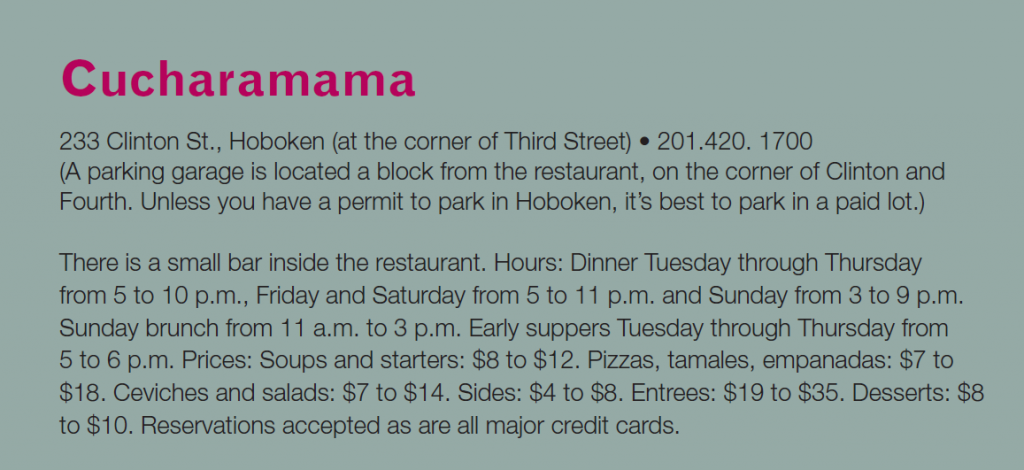
Editor’s Note: Andy Clurfield is a former editor of Zagat New Jersey. The longtime food critic for the Asbury Park Press also has been published in Gourmet, Saveur and Town & Country, and on epicurious.com.
Life may not begin at 60, but if these folks are any indication, it doesn’t get any less interesting…
60
Rod Hirsch • Dunellen
Community Leader
A hero supporting our overseas heroes, Hirsch founded “Operation Shoebox” in 2005. It’s a volunteer-based organization dedicated to shipping care packages filled with all sorts of necessities to our military men and women far away from home.
Cathi Rendfrey • Delran
Community Leader
Rendfrey is vigorously involved in women’s rights, directing the Women’s Opportunity Center at the YMCA of Burlington County, which helps displaced homemakers gain economic knowledge through education, networking, outreach and job preparations.
61
Eric Maskin • Princeton
Economist
Maskin won a Nobel Prize in 2007 for his contributions to mechanism design theory, a branch of economics that describes how institutions function in the midst of inefficient markets. Maskin lives with his family in Albert Einstein’s former residence.
Cynthia Meryl • Westfield
Theatre Director
Meryl founded the New Jersey Youth Theatre in Westfield, serving as its Artistic Director and Master Teacher for more than two decades. NJYT offers high-quality theatre arts education at little or no cost to young people with the talent and ambition to make it to Broadway.
Jane Hanson • Montclair
Community Leader
As co-founder of Partners for Women and Justice, Hanson has helped thousands of women and children involved in domestic violence and abuse. The organization offers free legal services from many volunteer lawyers as well as a fulltime staff.
JoJo Starbuck • Madison
Olympian/Coach
A four-time U.S. figure skating champion, Starbuck devotes herself to tutoring the newest generation of ice princesses at the Essex Skating Club.
Max Weinberg • Atlantic Highlands
Musician
The E Street Band veteran became a breakout star after teaming with Conan O’Brien. His new group, The Max Weinberg Big Band, plays the hits of the 30s, 40s & 50s.
62
Gloria Gaynor • Green Brook
Musician
Gaynor was the original disco diva, and she holds on to that title by continuing to deliver knockout concerts all over the world. I Will Survive has become an anthem for personal strength and self-discovery.
Bruce Springsteen • Rumson
Musician
Springsteen ranks among the most influential songwriters and performers in the history of rock. More important, you never know when he’ll pop on stage at a Jersey Shore club for a surprise set.
Zygi Wilf • Springfield
NFL Owner
A Fairleigh Dickinson grad, Wilf built malls and apartment complexes throughout New Jersey. He headed a group that purchased the Minnesota Vikings in 2005.
Stevie Wonder • Alpine
Musician
The master performer continues to churn out new music and electrify audiences after five decades in front of the microphone.
63
Bruce Springsteen • Rumson
Musician
Springsteen ranks among the most influential songwriters and performers in the history of rock. More important, you never know when he’ll pop on stage at a Jersey Shore club for a surprise set.
Zygi Wilf • Springfield
NFL Owner
A Fairleigh Dickinson grad, Wilf built malls and apartment complexes throughout New Jersey. He headed a group that purchased the Minnesota Vikings in 2005.
Stevie Wonder • Alpine
Musician
The master performer continues to churn out new music and electrify audiences after five decades in front of the microphone.
Nelson Johnson • Hammonton
Judge/Author
While conducting legal research in Atlantic County, he pieced together the seamy history of AC and wrote a book. Maybe you’ve heard of it? Boardwalk Empire.
Southside Johnny Lyon • Ocean Grove
Musician
The originator of Jersey Shore Rock, Lyon inspired countless young musicians, including Jon Bon Jovi. His band recently returned from a European Tour to play an east Coast swing that included—where else?—The Stone Pony in Asbury Park.
64
Steve Forbes • Bedminster
Publisher
Taking after his father and grandfather, Forbes published his first magazine while an undergrad at Princeton. As CEO of the publication that bears his family name, he is one of the country’s most influential conservative forces.
65
Sol Barer • Mendham
Organic Chemist
Barer is leading the research into therapies that turn incurable blood cancers into manageable diseases. A Rutgers Ph.D., he ranks among New Jersey’s most acclaimed and honored scientific minds.
Connie Chung • Middletown
Newswoman
The second woman to ever co-anchor a major network’s national news broadcast, Chung has worked for ABC, NBC, CBS, CNN and MSNBC. Did hubby Maury make this list? Read on…
Bob Hurley • Jersey City
Basketball
Coach Hurley has led St. Anthony’s High in Jersey City to 26 state championships (and counting). He was just the third high school basketball coach to be inducted into the Basketball Hall of Fame.
Woody Johnson • Bedminster
Business
Leader/Philanthropist The great-grandson of J&J co-founder Robert Wood Johnson, Woody serves as Chairman and CEO of the company and also owns the NFL Jets. He is an avid supporter of charitable organizations, fundraising for lupus, diabetes and more.
66
Bettye LaVette • West Orange
Musician
LaVette has been pumping out jaw-dropping blues, jazz, rock and R&B performances for a half-century. Since moving to NJ a decade ago, the Great Lady of Soul has scored a couple of Grammy nominations and performed at the Kennedy Center.
Roy Pedersen • Lambertville
Art Historian
A noted gallery owner, Pederson has been working for a decade on a landmark book about the Impressionist painters of New Jersey. It’ll stir up a hornet’s nest in the art world when it’s published in 2013. Trust us on this one.
67
Danny DeVito • Interlaken
Actor
Whether playing Louie on Taxi or Frank on It’s Always Sunny in Philadelphia, DeVito has a way of making the most loathsome characters utterly charming.
Deborah Harry • Red Bank
Musician
As the front woman for Blondie, Harry was the New Wave diva of the 1970s. She graduated from Hawthorne High and Centenary College, so she’s NJ all the way.
68
Mel Karmazin • Mantoloking
Entertainment Executive
The co-founder of Infinity Broadcasting in the 1980s, Karmazin pushed sports talk into the cultural stratosphere with WFAN, and later brought Howard Stern to millions of listeners as CEO of Sirius XM Radio.
69
George Benson • Englewood
Musician
A jazz guitar prodigy in the 60s, Benson launched an epic solo career in the mid-70s with Breezin’. The album went triple-platinum, selling more than three million copies. In 2009, Benson was recognized as a Jazz Master—the National Endowment of the Arts’ highest honor.
Leon Cooperman • Short Hills
Business Leader/Philanthropist
The billionaire head of Omega Advisors devotes a huge percentage of his attention and wealth to charity and education. Cooperman has followed the lead of Warren Buffett and Bill Gates in signing The Giving Pledge.
Peter Kellogg • Short Hills
Business Leader/Philanthropist
Kellogg took over his father’s specialty brokerage at age 30 and transformed it into a Wall Street market-maker. Since selling the company for $6.5 billion in 2000, Kellogg has been a generous supporter of countless causes, from his old high school to the U.S. Ski Team.
Joe Pesci • Lavallette
Actor
The quintessential pugnacious Garden Stater, Pesci was a successful child actor on Broadway and TV in the 1950s. He was running a restaurant in the Bronx in the late-70s when he got a call from Robert De Niro to audition for a co-starring role in Raging Bull. The rest, as they say, is history.
70
Muhammad Ali • Cherry Hill
Athlete
Ali was the first sports star to use his fame to draw attention to social injustice—and paid a heavy price. All these years later, the three-time heavyweight champ is still revered as both an athlete and activist.
Bonnie McCay • Bridgewater
Ecologist
The Rutgers professor is known for her extensive research focusing on sustainable marine fishery conditions and ecosystems around the world, while stressing the significance of the adaptation of institutions, such as science, law and property.
71
Daniel Murnick • Bernardsville
Physicist Another Rutgers professor, Murnick pioneered the development of the Laser Assisted Ratio Analyzer—a breath test that detects stomach/intestinal ulcers, which replaces invasive surgery.
72
Roger Ailes • Cresskill
Newsman
Say what you will about his politics or his TV network, but long before joining FOX, Ailes was already a legend as a conservative media consultant. He worked for the likes of Nixon, Reagan and Bush I, and engineered Rudy Giuliani’s first mayoral campaign in 1989.
73
Carolyn Clark • Long Valley
Ballet Director
The American Ballet Theatre performer used her knowledge and love of the dance world to fashion a highly acclaimed company and school in Livingston. It’s been flourishing under her direction since the 1960s.
Ben E. King • Teaneck Musician
King’s recording of Stand By Me had the unique distinction of being a Top 10 single 25 years apart, in 1961 and again in 1986. His nonprofit, The Stand by Me Foundation, reaches out to young people in Bergen County.
Maury Povich • Middletown
TV Personality
The father of tabloid infotainment is married to Connie Chung. They met in the early 80s when both were working in a Washington D.C. newsroom. His self-titled talk show has been pulling huge ratings for more than two decades.
74
Pete Dawkins • Rumson
Athlete/Military Leader
Dawkins turned down a scholarship to Yale to attend West Point in the 1950s. Good decision. He won the Heisman Trophy for Army in 1958 and retired with the rank of Brigadier General 25 years later. In between, he attended Oxford on a Rhodes Scholarship and while there taught the Brits an overhand rugby throw dubbed the Yankee Torpedo.
Joyce Carol Oates • Princeton
Author
Oates began writing at age 14 and has been on a straight path of success and determination ever since. Them, one of her first remarkable novels, has been followed by over 50 published works. She has been a creative writing professor at Princeton since 1978.
75
C.K. Williams • Princeton
Poet
The Newark-born poet won the Pulitzer Prize in 2000 for Repair, his volume regarding forgiveness. Like Oates, Williams teaches creative writing at Princeton.
76
Alan Alda • Leonia
Actor
During his years as the star of M*A*S*H*, Alda commuted from New Jersey to Hollywood so as not to uproot his family. Six Emmys later, his star continues to burn brightly, with unforgettable turns on series such as The West Wing, 30 Rock and The Big C. Alda also starred in the Broadway revival of Glengarry Glen Ross and the 2011 film Tower Heist.
Bob Lucky • Fair Haven
Electrical
Engineer Lucky won the coveted Marconi Prize for developing the adaptive equalizer that quadrupled data transmission rates for modems and telephone lines. An expert on the relationship between technology and society, Lucky chairs the group appointed by Gov. Christie to oversee the redevelopment of Ft. Monmouth.
Robert Wilson • Holmdel
Astronomer
Along with Bell Labs co-worker Arno Allan Penzias, Wilson discovered the cosmic microwave background radiation that proved the Big Bang theory, in 1964. They received a Nobel Prize in physics 14 years later.
77
Thomas Kean • Bedminster Township
Politician
Our 48th Governor (1982 to 1990)—as well as the Chairman of the “9-11 Commission”—Kean served as President of Drew University for 15 years. Kean University also bears his family name.
The Amazing Kreskin • North Caldwell
Mentalist
Born George Kresge in Montclair, Kreskin was inspired by comic book hero Mandrake the Magician. Not a psychic or an illusionist, Kreskin nonetheless has an uncanny talent for predicting the future. (He knew you’d be reading this article.)
78
Michael Graves • Princeton
Architect
Renowned for his interior design and commercial and residential buildings, Graves also produced sleek, functional domestic items for Target. He taught for nearly four decades at Princeton and is the director of the firm Michael Graves & Associates.
79
Danny Aiello • Saddle River
Actor
Few actors can play ugly and violent, and also gentle and sensitive, as well as Aiello. Stop and think of the big-time films he’s been in—Moonstruck, Bang the Drum Slowly, Do the Right Thing, Broadway Danny Rose, Pret-a-Porter, The Godfather. Simply amazing.
80
Wally Broecker • Closter
Geochemist
The man who coined the term Global Warming in the 1970s has authored more than 450 papers and 10 books, including The Great Ocean Conveyor in 2010. It was Broecker who convinced Land’s End billionaire Gary Comer to devote much of his fortune to raising awareness about climate change.
Jim Bunning • Cherry Hill
Athlete/Politician
The author of a perfect game against the Mets in 1964, Bunning followed a Hall of Fame baseball career with more than two decades of service in the U.S. Senate (R Kentucky). Bunning returned to South Jersey after leaving Washington in 2011.
Herwig Kogelnik • Rumson
Electrical Engineer
Among Kogelnik’s influential contributions during 40 years at Bell Labs were distributed feedback lasers, holographic data storage and multichannel optical networks. That last one is what makes the Internet work—take that Al Gore!
James P. “Doc” McGlone • Boonton
Educator
The beloved theater director staged more than 250 productions during his tenure at Seton Hall. He established an enduring Theater-in-the-Round tradition on the South Orange campus before retiring in 2011.
Bob McGrath • Teaneck
Entertainer
Known to generations of kids as Bob on Sesame Street, McGrath stands as one of the most beloved and trusted people in the history of children’s television.
81
Dick Kazmaier • Rumson
Athlete/Business Leader
Kazmaier appeared on the cover of Time in 1951 during a season that saw him win the Heisman Trophy for the Princeton football team. He turned down a chance to play in the NFL, choosing instead to attend Harvard Business School. Kazmaier went on to become one of the most respected figures in the sports marketing and finance industry.
John McPhee • Princeton
Writer
McPhee’s first book, A Sense of Where You Are, profiled fellow Princetonian Bill Bradley. Since then his work has garnered countless accolades and awards, including a 1999 Pulitzer for Annals of the Former World. McPhee’s roommate in school was Dick Kazmaier.
84
Mary Higgins Clark • Saddle River
Author
The Queen of Suspense has pumped out 42 best-sellers. She has been the President of the Mystery Writers of America and served as Chairman of the International Crime Congress.
John Nash • Princeton Junction
Mathematician
The subject of the film A Beautiful Mind, Nash broke new ground on game theory while struggling with paranoid schizophrenia. His mathematical theories have a wide range of applications, from economics to artificial intelligence, and provide an intriguing prism through which to view chance and events.
85
Bill Jersey • Lambertville
Filmmaker/Artist See
Judith Trojan’s profile of Bill on the facing page.
Clark Paradise • Toms River
Community Leader
Clark and his wife, Jean (81), stand out among the thousands of selfless community volunteers around the state. The Paradises created Your Grandmother’s Cupboard to collect and distribute desperately needed personal-care items (plus food and clothing) to impoverished families in temporary housing.
86
Bucky Pizzarelli • Saddle River
Musician
Pizzarelli was a guitar virtuoso long before it went electric, earning a seat in Vaughn Monroe’s big band as a teenager in the 1940s. He was voted into the New Jersey Hall of Fame last year.
87
Yogi Berra • Montclair
Athlete
One of baseball’s great pressure players—and the author of countless off-kilter quotes—Yogi is a regular institution in his adopted hometown of Montclair.
88
Frank Lautenberg • Cliffside Park
Politician
The oldest member of the U.S. Senate, Lautenberg initially retired but returned to Washington after Bob Torricelli got into hot water. Before entering politics, Lautenberg ran ADP in Roseland.
111
Melva Radcliffe • Wall
Supercentenarian
Yes, you read that right. Radcliffe was born in Paterson in 1901 and is closing in on the state longevity record of 112. She has survived colon cancer and two broken hips. Both of her sisters also reached triple-digits.
Editor’s Note: Is there an extraordinary 60+ New Jerseyan you think should have made this list? Tell us why on our Facebook page – EDGE Magazine (NJ).
An award-winning documentarian is leaving his mark on the Lambertville art scene
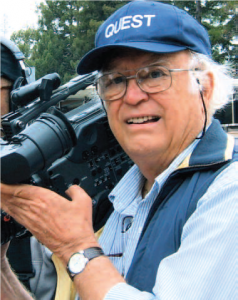
Bill Jersey
How do you segue from a gig as Art Director of the 1958 sci-fi potboiler, The Blob, to become one of the pioneers of the cinema vérité movement? If your name is Bill Jersey, you grab your camera, prop it on your shoulder and never look back. The legendary documentary filmmaker—now a robust 85 and a fixture in Lambertville arts circles—laughs that his Fundamentalist upbringing on Long Island hardly predicted his future stature as a cinematic trailblazer. In fact, Jersey never saw a film until he ran off to join the Navy. He was 17. “The first film I saw was on the USS Arkansas, a battleship that I went on to the South Pacific,” recalls Jersey from his home office along the banks of the Delaware River. “I enlisted in the Navy to get away from home. It was my escape.” The G.I. Bill helped bankroll his undergraduate studies in art. “Studying art in college was the only thing I could do that was acceptable to my parents,” he says. “I couldn’t go to the movies, dance, drink, smoke, swear or play cards.”
After graduation, he put his paint box in mothballs and tested the waters at Good News Produ ctions, a religious film company in Valley Forge, PA. “I told them I didn’t know anything about film,” says Jersey. “They hired me anyway, and I learned how to be an art director. I also realized how little I knew.” So he headed West to graduate film school at the University of Southern California. Graduating in 1956, he dipped his toe in the B-movie drama pool as Art Director of The Blob, Manhunt in the Jungle and 4D Man. But he was primed for documentaries. “There was something about wanting to connect to people in the real world and finding them much more interesting than working with actors with a script,” he says. “If you really care about people, they will know it, and they will open themselves up to you. And that’s what makes a good documentary.”
ctions, a religious film company in Valley Forge, PA. “I told them I didn’t know anything about film,” says Jersey. “They hired me anyway, and I learned how to be an art director. I also realized how little I knew.” So he headed West to graduate film school at the University of Southern California. Graduating in 1956, he dipped his toe in the B-movie drama pool as Art Director of The Blob, Manhunt in the Jungle and 4D Man. But he was primed for documentaries. “There was something about wanting to connect to people in the real world and finding them much more interesting than working with actors with a script,” he says. “If you really care about people, they will know it, and they will open themselves up to you. And that’s what makes a good documentary.”
In 1960, Jersey launched Quest Productions and began attaching his own vision to a slate of industrial films for corporate giants Western Electric, Exxon and Johnson & Johnson. He won his first Emmy Award in 1963 for directing Manhattan Battleground for NBC-TV’s DuPont Show of the Week. Ever the maverick, Jersey never felt compelled to toe the company line. “I don’t do ‘promotional’ films,” he emphasizes. “I found you have to really try to understand the company better than they do. I try to give them what they need, even though frequently they would not describe their needs that way. The only way is by taking the big risk, the hero’s journey, to look at things honestly.” Jersey got a chance to kick-start that journey when he filmed A Time for Burning in 1965. Commissioned by Lutheran Film Associates, the cinema vérité Civil Rights documentary records the failed mission of young Lutheran Pastor 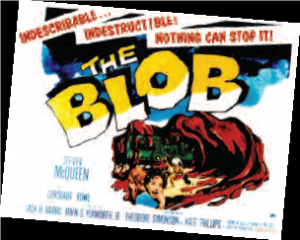 Bill Youngdahl to integrate a large, all white church in Omaha.
Bill Youngdahl to integrate a large, all white church in Omaha.
A Time for Burning tracks the crises of conscience and faith that arose when the minister encouraged his white congregation to engage with black congregants from a neighboring Lutheran church. Despite his gentle, faith-based approach, Pastor Youngdahl’s impact on Omaha’s Lutheran community proved to be, as Jersey predicted, incendiary. “The Lutherans wanted a film about the church and race,” he recalls. “So I found a minister who had an integrated church in New Jersey and was being called to a big al lwhite church in Omaha. I knew he’d want to integrate it, and that there could be some tension. I met with the minister, who said, ‘You can do a film here, there’s no problem.’ And I thought, ‘Well, that’s what you think.’ “Look,” adds Jersey, “the church didn’t need a film about a minister getting kicked out of his church.
They needed a film about how wonderful the church was, and how Jesus was going to be loving to everybody.” Unencumbered by a script, narrator, captions, timelines or media stars and filmed with a minimal crew, A Time for Burning became a benchmark Civil Rights documentary that subsequently received critical acclaim, an airing on most PBS stations nationwide, and an Oscar nomination. It thrust Jersey to the forefront of the cinema vérité movement where he has remained for almost 50 years,  producing and directing independent documentaries on such hot button issues as racism, criminal justice, gang violence, AIDS, Communism and integration. “For me, cinema vérité means letting the truth drive the story,” explains Jersey. “I don’t set out to prove anything— as many documentarians do. The difference between me and others is that I believe in being a participant observer. I explore options with my participants in the belief that our encounters will open them up to seeing more of themselves—not to see themselves as I see them. It’s a tricky business; but in my view, it’s an essential part of being a documentarian.”
producing and directing independent documentaries on such hot button issues as racism, criminal justice, gang violence, AIDS, Communism and integration. “For me, cinema vérité means letting the truth drive the story,” explains Jersey. “I don’t set out to prove anything— as many documentarians do. The difference between me and others is that I believe in being a participant observer. I explore options with my participants in the belief that our encounters will open them up to seeing more of themselves—not to see themselves as I see them. It’s a tricky business; but in my view, it’s an essential part of being a documentarian.”
A Time for Burning continues to be a staple in film schools where Jersey is a sought-after guest lecturer. In 2004, the film was selected by the Library of Congress for preservation in the prestigious National Film Registry. Despite his résumé of more than 100 films, Jersey—with typical self-effacement—claims to have lost count of the awards and honors he’s received. In the mix are names like Emmy, Oscar, Peabody, DuPont Columbia, Christopher, Gabriel, Cindy and Cine Golden Eagle. Jersey continued in the winners’ circle this spring, garnering a Peabody Award for Eames: The Architect and the Painter. The documentary profile of visionaries Charles and Ray Eames had a healthy theatrical release in late 2011 prior 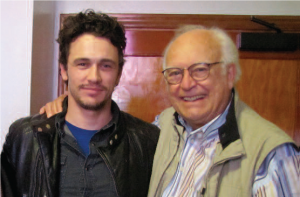 to debuting on PBS as part of the American Masters series. It should come as no surprise that Bill Jersey—father of five and grandfather of five—has no intention of winding down. “On the contrary, I’m winding up!” he says with relish, as he now juggles two careers instead of one.
to debuting on PBS as part of the American Masters series. It should come as no surprise that Bill Jersey—father of five and grandfather of five—has no intention of winding down. “On the contrary, I’m winding up!” he says with relish, as he now juggles two careers instead of one.
With a new two-hour documentary in the works—The Failed Revolution—about the history of the Communist Party in the U.S., Jersey has also enthusiastically returned to painting. He takes full advantage of the lush natural landscapes in and around his home, a charming 19thcentury boat builder’s cottage in Lambertville on the canal bordering the Delaware River. “We love it here!” he enthuses. “And since my passion is painting, this is a great community to be a part of.” A fan of painter Edward Hopper—“his use of light”— Jersey brings his filmmaker’s eye to his painting: “One of the reasons I like landscapes so much is I like being  out in the country where the light is changing. If you’re painting a river, you’re painting something in motion. The light does not sit there for you. That lovely shadow from the rooftop that you love will be gone in 15 minutes. It’s a very alive process.”
out in the country where the light is changing. If you’re painting a river, you’re painting something in motion. The light does not sit there for you. That lovely shadow from the rooftop that you love will be gone in 15 minutes. It’s a very alive process.”
Sharp and witty with energy to burn, Jersey spent his 85th birthday with his wife, Shirley Kessler, painting in Italy and enjoying his favorite sport—fine dining. He’s quick with a quip when asked if “80 is the new 60”. “Not in the knees,” he laughs, “but in terms of intellect and one’s capacity to engage in meaningful interaction with the world. That’s what keeps me young. Every day I read The Wall Street Journal and The New York Times because those are two perspectives I need to understand the world.” “Life is good!” admits Jersey, the eternal optimist. “With all my aches and pains, I am grateful—that’s the magic word—for every minute of every day!” There are Jersey tomatoes, Jersey Boys and Jersey Devils, but there’s only one Bill Jersey.
All photos courtesy of Bill Jersey
Editor’s Note: Bill Jersey’s paintings will be on exhibit at a one-man show at the Bank of Princeton Gallery in Lambertville, NJ, November 15 through December 15, 2012. A Time for Burning and Eames: The Architect and the Painter are available on DVD. Judith Trojan has written and edited more than 1,000 film and television reviews and celebrity profiles for books, magazines and newsletters. Her interviews have run the gamut from best-selling authors Mary Higgins Clark, Ann Rule and Frank McCourt to cultural touchstones Ken Burns, Carroll O’Connor, Judy Collins and Caroll Spinney (aka Big Bird and Oscar the Grouch). Follow Judith’s media commentary in her FrontRowCenter blog at judithtrojan.com.
Which Gray Matter Matters Most?

Photo credit: iStockphoto/Thinkstock
Think of the smartest person you know. Now ask yourself: Is that person successful? Is that person happy? Stop right there. The two are not necessarily the same thing. A robust IQ may look good on paper, but there is a new way of measuring abilities called the Emotional Quotient (EQ)—or, more specifically, Emotional Intelligence (EI)—which is proving to be a more accurate predictor of your potential for a happy and successful life. Emotional intelligence is best defined as a set of life skills. It’s the ability to handle challenging situations by managing your own emotions, and the emotions of those around you.
These skills can improve not only your personal life, but your work environment as well. On a corporate level, companies that have implemented emotional intelligence training have noticed an increase in production and profits. Schools that have incorporated emotional intelligence into their curricula have reported improvement in grades and test scores. A person with high emotional intelligence and an average IQ has a greater chance of flourishing—both personally and professionally—than a person who possesses a high IQ with low emotional intelligence. Emotional intelligence is a relatively new term. But it’s been around for as long as humankind has existed. In the 19th century, we called it “horse sense” and in the 20th century, “street smarts.” It was how we described individuals able to manage themselves in new or stressful situations, who demonstrated the kind of level-headedness that led to successful decision-making. It was all about understanding your own emotions as well as someone else’s, and governing yourself accordingly.
In the 1980s and 1990s, researchers began to look at emotional intelligence with a more scientific eye. Right away, there were some distinguishing characteristics. For instance, with IQ, there is a standardized test that measures your cognitive abilities. You either have a high IQ, or you don’t, and it’s going to be about the same at age 15 and age 50. Emotional intelligence, on the other hand, is a part of your reasoning capabilities, and these can be learned; you don’t necessarily have to have been born with a high EQ. Here’s another eye-opening tidbit. When your parents told you to stop watching TV and read a book—or go outside and play—to keep your brain from turning to mush, they actually were right. With use, the brain is forming and expanding. This is called neuroplasticity. Neuroplasticity describes the brain’s ability to change by forming new connective tissue. A single cell can grow 15,000 new connections. The area of the brain that deals with our emotions, the amygdala, expands when our EQ improves, by forming new axons (connections). The amygdala is the brain’s center for emotional memory, emotional reactivity, and helps us be resilient when dealing with emotional distress. Emotional intelligence requires effective communication between the emotional and the rational centers of the brain. So, the higher our EQ becomes, the more connective tissue is formed, giving us an improved brain.
THERE’S A TEST FOR THAT Is there an emotional intelligence test? Yes, but only a handful have been proofed with extensive research and accepted by the Consortium for Research on Emotional Intelligence in Organizations (CREIO). Reuven Bar-On, Ph.D., a clinical psychologist and a leading pioneer in the field of emotional intelligence, developed the EQ-I (Emotional Quotient Inventory) test after 18 years of research. The test was published in 1997 and was the first accepted measurement of emotional intelligence. It has been distributed worldwide in 30 different languages, and covers five different scales of EQ:
- Intrapersonal (self-awareness and self-expression)
- Interpersonal (social awareness and interpersonal-relationship)
- Stress Management (emotional management and regulation)
- Adaptability (change management)
- General Mood (self-motivation)
Another highly accepted test is the Mayer-Salovey- Caruso Emotional Intelligence Test (MSCEIT 2.0). This test went through a grueling evaluation process, with detractors expressing concern about the viability of standardizing what is a right or wrong response when dealing with emotions. After much point and counterpoint, the MSCEIT emerged as another highly valued and widely employed test. It measures the four branches of EI based on the John C. Mayer and Peter Salovey model:
- Perceiving emotions
- Using emotions to facilitate thought
- Understanding emotions
- Managing emotions

Photo credit:
EQ IN THE WORKPLACE Most EQ tests take anywhere from 30-45 minutes to complete. Because a higher EQ has been shown to not only increase your mental health by lowering stress (which can lead to anxiety, depression and physical problems), but also your relationships and performance in a complex work environment—the place you are most likely to encounter an EQ test is in the workplace, or at least when applying for a job. Indeed, many companies have now incorporated emotional intelligence training into their practices, with spectacular results. Typically, they report anywhere from 55% to 70% improvement in both individual and corporate production. Emotional intelligence has also become a key factor in differentiating a mediocre business leader or manager from a highly effective one. The ability to understand the moods and behavior of employees—coupled with the management of the leader’s own emotions when dealing with stressful situations—leads to better interactions with co-workers.
This results in a more approachable team leader who is more readily available, who can maintain emotional flexibility to positively direct the energies of others, and who creates a more conducive work environment. This translates into greater trust and respect for the leader. Conversely, the lack of emotional intelligence may help explain why really smart people do really dumb things that end up ruining their careers. In his paper Bringing Emotional Intelligence to the Workplace, Daniel Goleman, Ph.D., writes that unlike “the brilliant executive who does everything well except get along with other people, or the technically gifted manager who can’t handle stress and whose career falters,” leaders with good emotional intelligence tend to advance more successfully in their field and remain happier throughout the process. “The super salesperson whose ability to sense what is most important to the clients and to develop a trusting relationship with them, or the service employee who is excellent in dealing with irate customers by helping to calm, and diffuse the situation,” are two examples of how emotional intelligence is used in the work environment with positive results.
IQ may get you in the door, but EQ will help you manage the stress and emotions of the job. Indeed, what research is available on the subject suggests that the higher one advances in an organization, the more important EQ becomes—with EQ skills accounting for 90 percent of what separates good leaders from average ones. For the record, Goleman is probably the most famous of the emotional intelligence experts. He has published numerous books and papers on EI. The most popular book, Emotional Intelligence, was written in 1995 and sold over 5,000,000 copies worldwide in 40 different languages. His second book, Working with Emotional Intelligence, deals with EI in the business world.
GIRLS RULE? In terms of basic skills for leading a happy and successful life, almost every test for EQ finds that women have an edge over men. However, Goleman warns, “It’s not that simple.” Keep in mind that these tests have a basic four-part scale: self-awareness, managing emotions, empathy, and social skills. In response to a blog posted in 2011, “Are women more emotionally intelligent than men?”, Goleman answered, “Yes, and yes and no.” Women, on average, are better at some forms of empathy, while men are better at managing distressing emotions. Yet, as Goleman points out, “There are two very different and distinct Bell Curves that lead to an overlap where it can switch.” He explains further, “There are three different kinds of empathy: cognitive empathy (being able to know how another person sees things); emotional empathy (feeling what the other person feels); and empathic concern or sympathy (being ready to help someone in need).” Goleman maintains that women tend to be better at emotional empathy, which fosters rapport and chemistry with others. For example, if another person is upset, a woman can stay with the feelings of distress for a longer period of time than a man.
A man will sense the feeling for a moment, then tune out the emotions and switch to an area of his brain that will try to solve the problem at hand. The part of the brain that registers empathy is called the insula. Neuroscientists tell us that, when we empathize with someone, our brain mimics what that person is feeling, and the insula reads that pattern and tells us what that feeling is. So, when a man’s brain clicks into tune-out mode, he’s no longer using the insula; he’s switched to another part of the brain. This helps him to stay calm while everyone else is in high emotional distress, enabling him to focus on finding a solution. Conversely, a woman’s tendency to stay in-tune with an emotionally upsetting situation helps her to nurture and support others. “So, one is not better than the other, just different,” Goleman concludes. Tune in, tune out—it’s a brain difference. Since women do tend to score higher than men on the empathy card, they have the edge when it comes to the work environment. However, as psychologist Ruth Malloy of the Haygroup Boston (which studies business leaders) says, “When it comes to top leaders in business, gender differences in emotional intelligence level out.” The men are as good as the women and the women are as good as the men.”
Editor‘s Note: J.M. Stewart’s other contribution to this issue—her interview with Sandra Oh—actually started with a discussion with the actress about the subject of EQ. Oh is not a big fan of media, but is passionate on this particular subject. You can read an extended version of EQ vs. IQ—including a look at how educators view the subject—at edgemagonline.com.
When Is Replacement Surgery the Right Call?

Photo credit: iStockphoto/Thinkstock
According to the American Academy of Orthopedic Surgeons, over 500,000 total knee replacements are performed each year. In addition, close to 300,000 total hip replacements are performed annually. As a physical therapist, I am often asked about total joint replacements. Many individuals are not sure if they are candidates for a replacement; some are concerned about what they have to do in order to regain function after the operation, while others are a bit nervous about the operation itself—and the potential of pain and how it will impact their lives. My answer is that in the past 50 years, refined operative techniques, advancements in total joint component design and enhanced rehabilitative techniques have totally changed the game in rehabilitative medicine. We can get a person moving again without the arthritic pain that many people experience for years prior to their joint replacement.

Photo credit: iStockphoto/Thinkstock
Decisions, Decisions As we age, everyone seems to have an ache or a pain someplace. Changes in the surfaces of our joints—with osteoarthritis being the most prevalent cause—are a major source of pain for many people. While some individuals can work through the pain and not have it affect their daily lives, others experience pain that limits everyday functions to a point where it is difficult for them to take care of themselves. Also, many of us—especially those of the baby boomer generation—want to continue very active lifestyles, which the arthritis in their joints makes difficult to do. When does the discussion about joint replacement begin? A family physician will typically conduct a physical exam, do blood tests and take x-rays to determine the cause of joint pain. Once it is established that the joint surfaces are the likely source of the pain, patients are referred to an orthopedist, who can determine whether or not total joint replacement is warranted. Surgery is not a foregone conclusion at this point. On the contrary, an orthopedist often will refer patients to physical therapy in order to determine if maximizing muscle function can decrease pain to a point where one can manage discomfort and lead an active life without undergoing an operation. Some do gain enough pain relief and are able to return to a level of function without a joint replacement. Others—even those in good shape, muscle function-wise—still find the pain and loss of movement at a level that leads them to explore the possibility of a total joint replacement. By the way, as a physical therapist, I believe all these patients are in a better place than they were before. For those who do decide to go down the path of joint replacement, they are in much better shape heading into the surgery than they would have been without this period of physical therapy.
Walking the Walk How long before a patient can go home after surgery? The national average for total joint replacement patients’ stay in the hospital is approximately four days, depending on the type of surgery, age of the patient and any other medical conditions a person may have. However, both total-hip and total-knee patients are up and walking immediately—in some cases starting the afternoon of their surgery! 
From there, physical and occupational therapists provide the skills and encouragement necessary to achieve early, major gains in function. While patients experience normal postoperative discomfort, most notice that the pain they had before the operation is almost gone. The reason for this is simple—the source of that pain (the roughed surfaces of bone in the joint) is now gone. Pain reduction, new methods of non-narcotic pain control, early movement and function are all the hallmarks of today’s modern total joint replacement experience. We have indeed come a long way. After discharge from the hospital, whether one goes to a sub-acute rehab center or home with homecare, the real work begins. I have found that those patients who really push themselves in their rehab routine at home—and later, when they start their outpatient program—are the ones who achieve the greatest success. Unfortunately, our society still has a bit of a passive approach to healthcare; many still just want to swallow a pill and move on with their lives. Not so with total joint replacements. These patients are fully engaged in their own treatment and progress. Persons with total joint replacements find themselves doing more with each passing day, experiencing less pain than they ever thought possible.
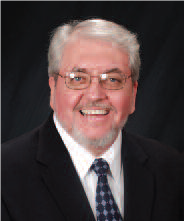 Editor’s Note: Jim Dunleavy is the Director of Physical Therapy and Rehabilitation for Trinitas Regional Medical Center.
Editor’s Note: Jim Dunleavy is the Director of Physical Therapy and Rehabilitation for Trinitas Regional Medical Center.
A New Look at the Way We Measure Excellence

Photo credit: iStockphoto/Thinkstock
Having recently been coerced into a rousing game of Milton Bradley’s iconic preschool board game, Chutes and Ladders, I was reminded that the players don’t simply go up the ladders and down the chutes aimlessly. Each movement up begins on a square with a picture of a virtuous deed—for example, mowing the lawn or saving a kitten from a perilously high tree limb. The resulting square at the top of the ladder is a picture of the reward for that good deed, such as earning an ice cream sundae or money for a trip to the movies or the circus.
Conversely, reckless behavior—like eating all of the cookies or sneaking a comic book inside one’s history textbook—results in a quick trip down a chute as the deserved consequence of said choice. This popular pastime is perhaps one of the earliest values-based educational games a child might encounter. The message is unequivocal and morally relevant. But is this type of learning experience being woven into the curricula in our schools, where boys and girls spend the majority of their waking hours? Non-cognitive learning and concrete character development are crucial to the development of capable students and solid future citizens.
These qualities are particularly valuable when a young person enters the job market. The question is, how can skills such as resiliency, teamwork, creativity and respect actually be worked into traditional school curricula? These were among the “values” identified and selected in recent conversations among the heads of school of 25 institutions as part of an educational round-table. Other qualities included integrity, grit, empathy and zest—that enthusiasm that keeps us dedicated to the pursuit of knowledge. Among the participants was Dr. Chad Small, Headmaster of the Rumson Country Day School in Monmouth County. In his view, these qualities need to be viewed by educators in the same critical context as, say, math and science. “What is crucial to us staying ahead as a country?” he asks. “What precisely is it that makes America great?” This is far from a rhetorical question. Indeed, it is common knowledge that American students have fallen behind other countries in their educational aspirations. This has triggered legislation such as No Child Left Behind.
The crux is that, to support and fund such initiatives, politicians are demanding “measurables,” which in turn lead to test performance-driven teaching. This heresy of emphasis on test scores may well be costing our children dearly, as teachers de-emphasize acquiring values as its own skill set—even though such values are vital to success in career and life, according to recent research. How do we help students in independent schools— and in all schools—to better meet the future head-on? Resilience, maintains Small, is one of the core character traits American schools should be striving to cultivate in their students. Dr. Randy Kleinman, Montclair Kimberley Academy’s Head of Middle School, adds that selfmonitoring, consistent effort and self-advocacy are a part of MKA’s educational mission. “While we do not specifically identify a ‘non-cognitive’ segment of our curriculum, the emphasis on development of those skills is woven into our teaching and the students’ learning experiences throughout our program.” Kleinman says that his faculty has studied the work of Stanford psychologist Carol Dweck, who emphasizes the importance of “self-insight” and consistent, persistent effort as keys to success.
Dweck is among the many educators, ethicists and  academics pondering why attributes such as resilience have dwindled in recent decades. Dr. Richard Weissbourd, a Harvard professor, is also concerned about the priorities of parenting youth in America today. He calls upon parents to reflect upon the emphasis on their children’s happiness, self-esteem and achievement to the extent that these concerns appear to have usurped the importance of more character-driven values. Weissbourd goes on to say that American parents today are so concerned with their children’s achievement and happiness, that they shelter and hover—so much so that they attempt to envelop them in a stifling bubblewrap hug of insulation.
academics pondering why attributes such as resilience have dwindled in recent decades. Dr. Richard Weissbourd, a Harvard professor, is also concerned about the priorities of parenting youth in America today. He calls upon parents to reflect upon the emphasis on their children’s happiness, self-esteem and achievement to the extent that these concerns appear to have usurped the importance of more character-driven values. Weissbourd goes on to say that American parents today are so concerned with their children’s achievement and happiness, that they shelter and hover—so much so that they attempt to envelop them in a stifling bubblewrap hug of insulation.
Sparing kids adversity, he insists, actually divests them of coping skills. One might think that schools with religious affiliations would have some advantage in this respect, and perhaps they do. At Delbarton School in Morristown, implicit and explicit methods are used to teach skills like personal responsibility, resiliency, peer leadership, good decision-making, and effective communication. Brother Kevin M. Tidd, a member of the History and English departments who also heads up Delbarton’s Speech and Debate program, describes this focus as part of developing “a young man’s overall moral and religious character.” Union Catholic High School in Scotch Plains, has gone a step further and adopted the framework and holistic view developed by the Partnership for 21st Century Skills, a national non-profit organization that advocates the “4 Cs” for student education—Critical Thinking, Communication, Collaboration and Creativity.
Assistant Principal Christine McCoid points out that, although “21st Century” connotes proficiency in technology and media, non-cognitive values such as cooperative learning, resiliency and leadership are always incorporated at UC. “We measure the success of our core value integration through observation rather than absolute quantification,” she says, acknowledging that these skills are difficult to put a number on. Small agrees. Education, he says, has been soft in the area of quantifying character development: “We’ve always known we’ve done it, but we haven’t always known how to measure how well we are doing at it.” With regard to such assessment, Small and the 24 other heads of school at the aforementioned round-table prevailed upon the Educational Testing Service (ETS) to step in.
Using the core values identified by the group, ETS created a questionnaire to be distributed to students designed to encourage each child to self-report data regarding his or her character engagement while in school. The collected data will be anonymous, so that no individual student will be singled out. However, a seventh grade class at one school may be compared with another seventh grade class in an attempt to quantify, for example, values such as persistence and creativity. Imagine if high school seniors touted their “Empathy Scores” instead of swapping SATs. SATs matter for 12 months of your life. Empathy matters as long as you live. The Morristown-Beard School makes the concept of “student engagement” a central priority of its curriculum, and has actually attempted to quantify this non-cognitive quality. “We have tried to measure this aspect of life at MBS through administering the National Survey of Student Engagement for the past two years,” explains John Mascaro, Dean of Faculty. “The results of this survey indicate a high level of student engagement, and we feel that this engagement is a key factor in the ongoing success of our students.” Scoring non-cognitive skills may strike some as a little crazy at first. But in this world of scorekeepers, by measuring something, we deem it a metric that matters, that determines progress over time, that encourages goal-setting.
Private school headmasters can look at their Boards (who demand accountability for the “value-added” programs) and say, “This is what makes us better.” That is precisely why independent schools have picked up the gauntlet on this critical issue of character education and quantification. They do not take government money, which means these institutions have the freedom to push the envelope and explore progressive ideas like establishing baseline scores for non-cognitive skills. Why does that matter? Because if you can score something, you can also legislate and fund it. And maybe, if you can put character development on an equal footing with reading, writing and arithmetic, you’ve found the key to putting our kids back on top of the heap. “You have to start somewhere,” Chad Small says. “You’ve got to get the conversation going.”
Editor’s Note: Erin Avery runs Avery Educational Resources (averyeducation.com). She holds Master’s degrees from Oxford and Yale Universities.
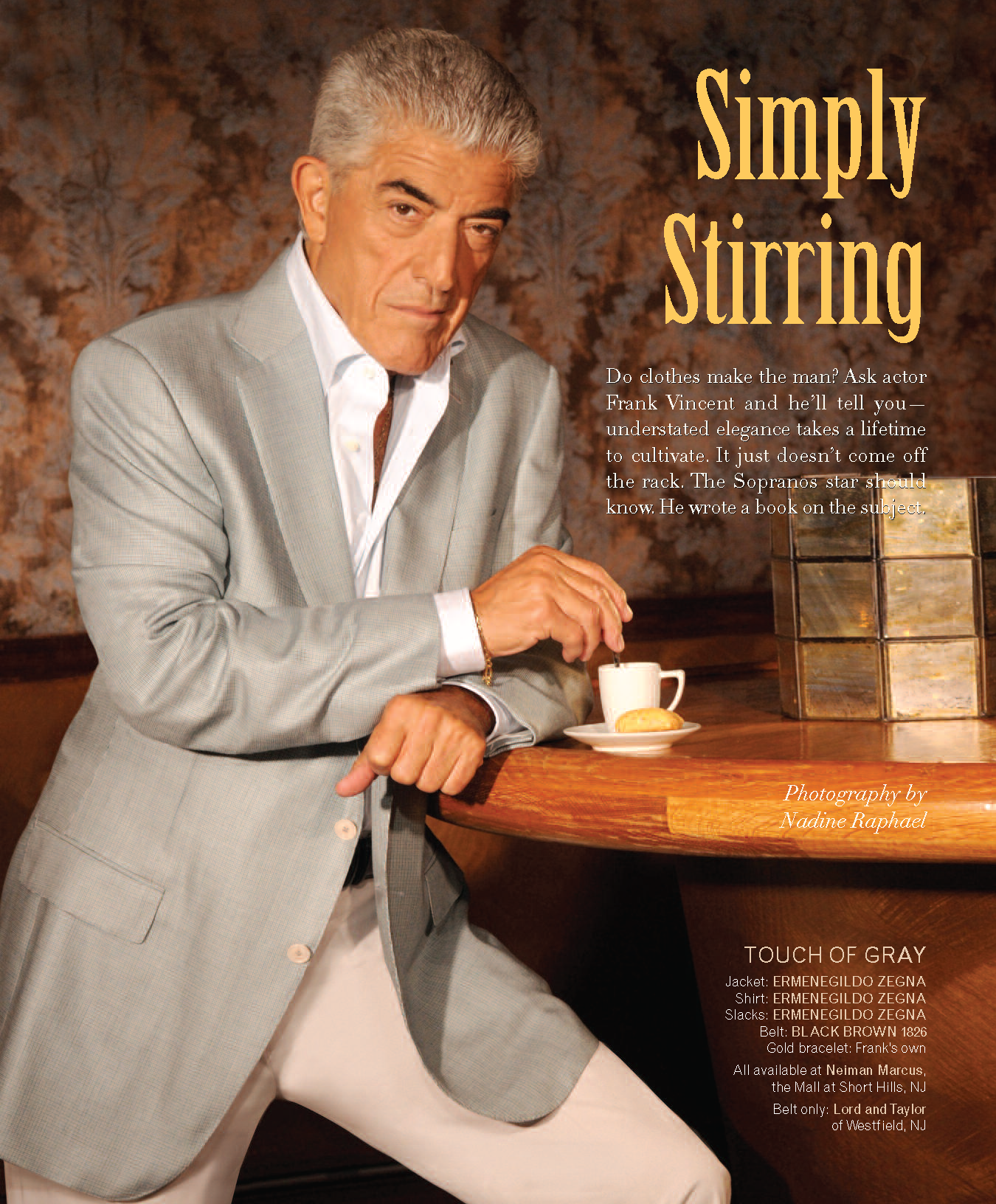

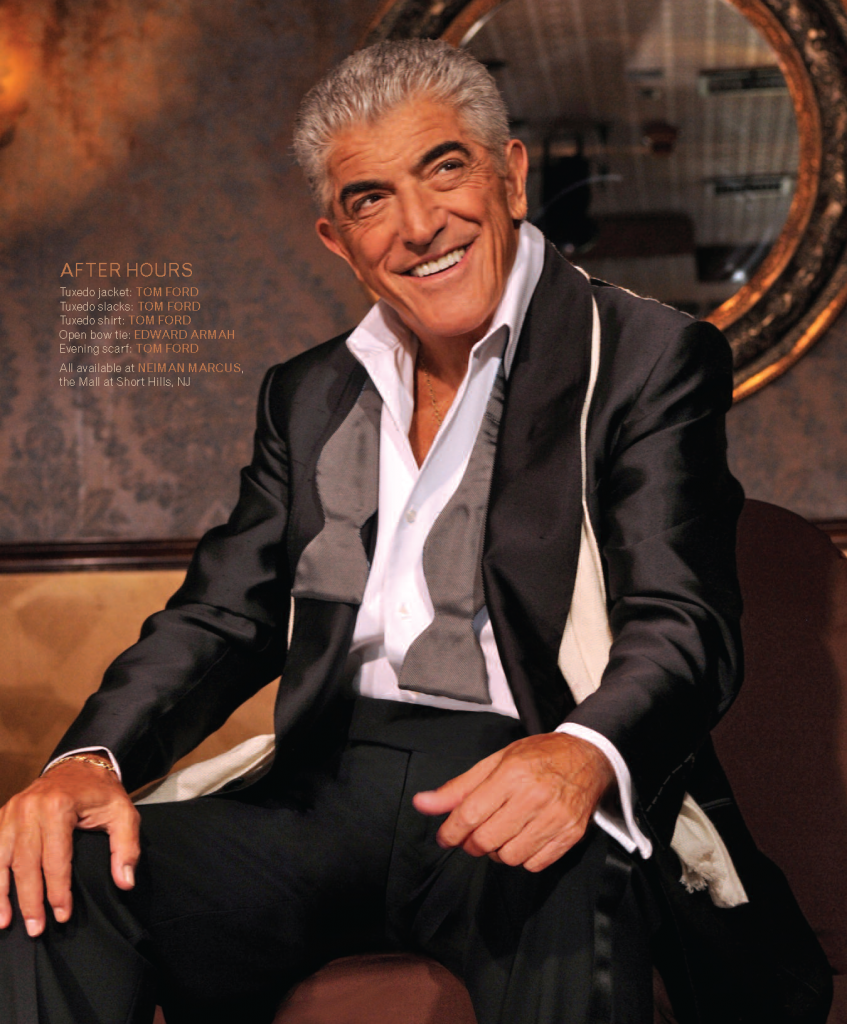


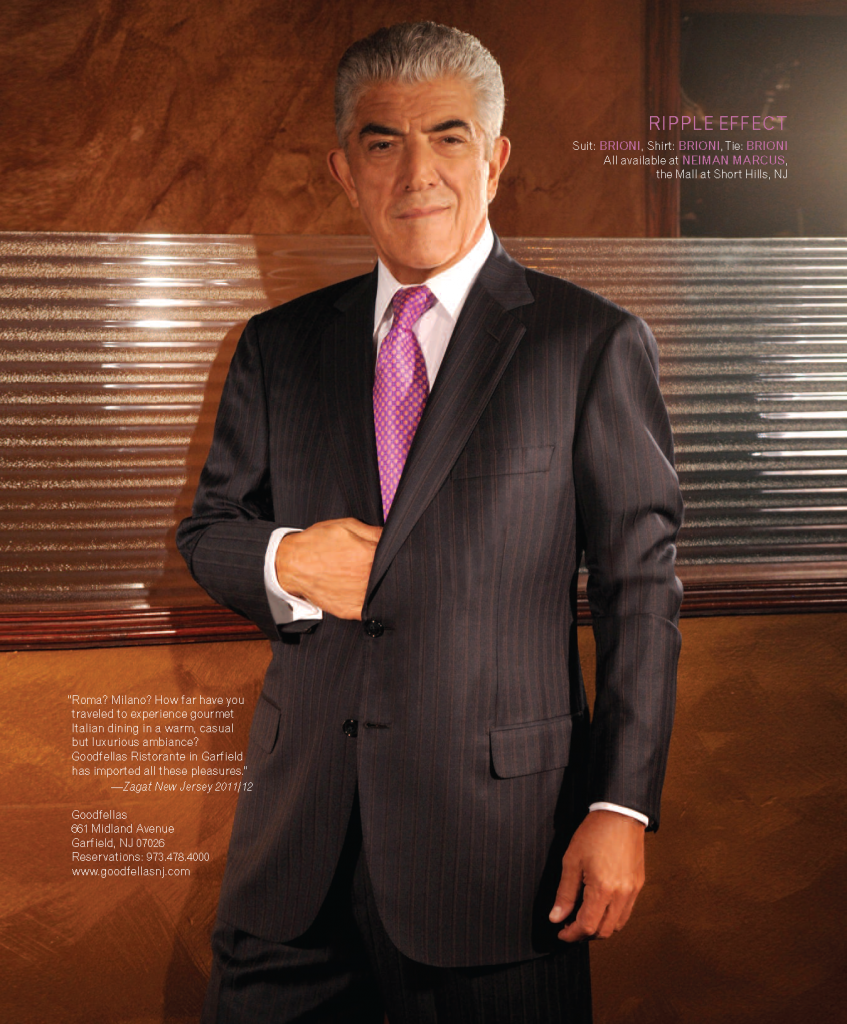

By the time students in New Jersey move into middle school, they have been thoroughly indoctrinated into the history, culture and infrastructure of the Garden State. Typically, this subject is taught as part of the Social Studies curriculum in fourth or fifth grade. The answers to these 20 questions can be found in any elementary school textbook…or you could just ask an 11-year-old.
The longest river contained completely within New Jersey is…
a) the Raritan River
b) the Shark River
c) the Hackensack River
The native people of New Jersey began farming the land…
a) about 10,000 years ago
b) about 5,000 years ago
c) about 1,000 years ago
The first European explorer to set foot on New Jersey soil was…
a) Giovanni da Verrazano
b) Henry Hudson
c) Cabeza de Vaca

The first permanent Dutch settlement in New Jersey was called…
a) New Netherlands
b) New Amsterdam
c) Bergen

Revolutionary War heroine Molly Pitcher participated in…
a) The Battle of Trenton
b) The Battle of Monmouth
c) The Battle of Short Hills
The city of Trenton became New Jersey’s capital in…
a) 1770
b) 1780
c) 1790
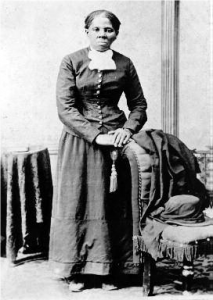
Between 1918 and 1929, the number of cars in New Jersey rose by more than…
a) 250,000
b) 450,000
c) 650,000
Harriet Tubman’s base of operations for the Underground Railroad was…
a) Glassboro
b) Camden
c) Cape May
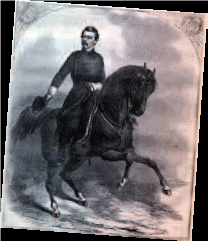
George McClellan, general in chief of the Union Army, was from…
a) Westwood
b) West Orange
c) West New York
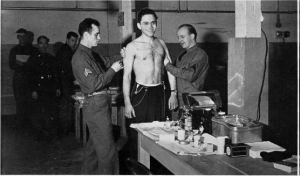
Camp Dix (aka Ft. Dix) was built to train troops for…
a) The Spanish-American War
b) World War I
c) World War II

The waterway that brought coal from Pennsylvania to New Jersey factories in the 1800s was…
a) The Morris Canal
b) The Erie Canal
c) The Raritan Canal
The number of New Jerseyans who served in the military during World War II was just over…
a) 300,000
b) 400,000
c) 500,000
The postwar builder who turned Willingboro from a town of 600 to a suburb of 40,000 was…
a) William Carteret
b) William Levitt
c) William Hovnanian

The Garden State Parkway opened…
a) in 1949
b) in 1954
c) in 1959
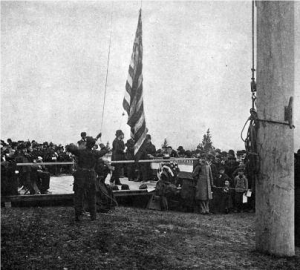
The governor who initiated the first state income tax, specifically to support New Jersey’s schools, was…
a) Frank Hague
b) Brendan Byrne
c) Jim Florio
The state’s famous business slogan is…
a) Business is ripe in the Garden State
b) Your future is just an exit away
c) New Jersey makes, the world takes
The two parts of the legislative branch in New Jersey are…
a) the Senate and General Assembly
b) the Governor and Congress
c) the Judicial and Fiscal
The Pledge of Allegiance was given as the national oath in 1893 for the first time at…
a) The Newark Train Station
b) The Twin Lights on the Navesink Highlands
c) The steps of the Trenton Courthouse
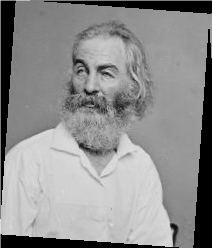
Poet Walt Whitman lived out his final years in…
a) Saddle River
b) Weehawken
c) Camden

The New Jersey Performing Arts Center in Newark opened in…
a) 1997
b) 1999
c) 2001 A passing grade is 13. Brave enough to check your work? You’ll find the answers in the box at right…

Images courtesy of Upper Case Editorial Services
News, views and insights on maintaining a healthy edge.
A Shift in Workplace Health A meta-analysis of studies covering more than two million people shows that people who do shift work have a 23% greater risk of heart attack—and a 5% increase in risk of stroke—than those who work other types of jobs. The group that conducted the research at the Stroke Prevention and Atherosclerosis Research Centre in Ontario, Canada, believes their findings have profound implications for public policy and occupational medicine. Shift work disrupts the body clock (aka circadian rhythm) and is associated with an increased risk of high blood pressure, high cholesterol and diabetes. However, this is the first time its link to vascular disease has been established. Shift work is defined as evening shifts, irregular or unspecified shifts, mixed schedules, night shifts and rotating shifts; and workers who pull a “normal” 9 to 5 work day were used as the control group.
 The Ankle Bone’s Connected to the…What? That broken ankle may lead to bigger problems. So say researchers at Texas Tech, who recently established a link between ankle injuries and life-threatening complications, including deep vein thrombosis and pulmonary embolisms. The study suggested that treating physicians should assess patients with ankle fracture for their risk of developing a venous thromboembolic event on an individual basis, and also provide thromboprophylaxis (prevention of thrombosis) for those with an increased risk of developing such complications.
The Ankle Bone’s Connected to the…What? That broken ankle may lead to bigger problems. So say researchers at Texas Tech, who recently established a link between ankle injuries and life-threatening complications, including deep vein thrombosis and pulmonary embolisms. The study suggested that treating physicians should assess patients with ankle fracture for their risk of developing a venous thromboembolic event on an individual basis, and also provide thromboprophylaxis (prevention of thrombosis) for those with an increased risk of developing such complications.
 Let’s Do (it at) Lunch As a rule, people don’t mind paying the tab to achieve healthy, beautiful skin. Finding the time to make it happen is often the greater obstacle. According to plastic surgeon Dr. Joseph D. Alkon, there are a number of non-invasive, “lunchtime” treatments that can make your skin look and feel its best. “A chemical peel helps those with dry skin, uneven tone, acne, discoloration and/or mild wrinkles,” Dr. Alkon says. “This office-based procedure uses a special liquid to remove the harsh outer layers of skin, while leaving smoother and healthier layers intact. Peels vary from mild to aggressive depending on the skin being treated.” Microdermabrasion also works to remove unhealthy, dry, flaky outer skin, he adds. This procedure uses a gentle tool or wand to remove the outer layers of skin. This leaves behind fresh, healthy skin. Although commonly performed on the face, other body parts can benefit from both chemical peels and microdermabrasion. “A facial is another popular, relaxing and rejuvenating service,” Dr. Alkon says. “It’s often performed by a licensed esthetician, and includes a skin analysis followed by customized exfoliation, extraction, massage, and application of toners, moisturizers, and sunscreens customized to your skin type. A facial can leave the skin clean, clear, hydrated, and rejuvenated.”
Let’s Do (it at) Lunch As a rule, people don’t mind paying the tab to achieve healthy, beautiful skin. Finding the time to make it happen is often the greater obstacle. According to plastic surgeon Dr. Joseph D. Alkon, there are a number of non-invasive, “lunchtime” treatments that can make your skin look and feel its best. “A chemical peel helps those with dry skin, uneven tone, acne, discoloration and/or mild wrinkles,” Dr. Alkon says. “This office-based procedure uses a special liquid to remove the harsh outer layers of skin, while leaving smoother and healthier layers intact. Peels vary from mild to aggressive depending on the skin being treated.” Microdermabrasion also works to remove unhealthy, dry, flaky outer skin, he adds. This procedure uses a gentle tool or wand to remove the outer layers of skin. This leaves behind fresh, healthy skin. Although commonly performed on the face, other body parts can benefit from both chemical peels and microdermabrasion. “A facial is another popular, relaxing and rejuvenating service,” Dr. Alkon says. “It’s often performed by a licensed esthetician, and includes a skin analysis followed by customized exfoliation, extraction, massage, and application of toners, moisturizers, and sunscreens customized to your skin type. A facial can leave the skin clean, clear, hydrated, and rejuvenated.”
 New Alzheimer’s Drug May Be on Horizon The medical profession has accepted the fact that there is no “cure” for Alzheimer’s. However, a trial just concluded found that patients who had injections every two weeks of the drug immunoglobulin—made from antibodies in human blood—showed no decline in cognition, memory, daily functioning or mood for a period of three years. Immunoglobulin is normally given to patients who suffer from an immune deficiency, and is extremely costly. If all goes well, however, the drug would be on the market within 10 years. “This is probably the most exciting drug we know about that is currently in the late stages of research,” says Clive Ballard, Director of Research at the Alzheimer’s Society. “We now know it is safe. But the real test will be whether these initial promising results can subsequently be replicated in larger groups.” As life spans increase, the likelihood that a person over the age of 65 will develop some form of dementia is about one in three. Currently, there are only three drugs for Alzheimer’s in the early to moderate stages, and they are effective in some patients but not in others.
New Alzheimer’s Drug May Be on Horizon The medical profession has accepted the fact that there is no “cure” for Alzheimer’s. However, a trial just concluded found that patients who had injections every two weeks of the drug immunoglobulin—made from antibodies in human blood—showed no decline in cognition, memory, daily functioning or mood for a period of three years. Immunoglobulin is normally given to patients who suffer from an immune deficiency, and is extremely costly. If all goes well, however, the drug would be on the market within 10 years. “This is probably the most exciting drug we know about that is currently in the late stages of research,” says Clive Ballard, Director of Research at the Alzheimer’s Society. “We now know it is safe. But the real test will be whether these initial promising results can subsequently be replicated in larger groups.” As life spans increase, the likelihood that a person over the age of 65 will develop some form of dementia is about one in three. Currently, there are only three drugs for Alzheimer’s in the early to moderate stages, and they are effective in some patients but not in others.
 Smile and Say “Aaaaaah” Do you experience nausea, bloating, heartburn, constipation, or a feeling of fullness? These may be symptoms of a motility disorder, such as gastroparesis and chronic constipation. Gastropathy is a common condition in long standing diabetic people, especially if not well controlled. People with gastropathy can suffer from postprandial indigestion, abdominal discomfort, nausea, and vomiting. Fortunately, the guesswork has been removed from diagnosis of these conditions thanks to the SmartPill, a wireless motility capsule procedure. “The SmartPill capsule travels through your GI tract, collects data, which is then recorded for your doctor to evaluate,” explains Samiappan Muthusamy M.D. of the Center for Digestive Diseases (cddnj.com), which offers this state-of-the art procedure. According to Dr. Muthusamy, the SmartPill can also diagnose Diffuse Colonic Dysfunction (aka lack of colon motility), an extremely serious condition that can present as constipation. Of course, causes such as a poor diet, lack of fluids, sluggish thyroid, colon cancer and constipating medications are ruled out first. “In modern medicine,” adds Dr. Muthusamy, “living with gastropathy and constipation is a thing of the past. They are treatable.”
Smile and Say “Aaaaaah” Do you experience nausea, bloating, heartburn, constipation, or a feeling of fullness? These may be symptoms of a motility disorder, such as gastroparesis and chronic constipation. Gastropathy is a common condition in long standing diabetic people, especially if not well controlled. People with gastropathy can suffer from postprandial indigestion, abdominal discomfort, nausea, and vomiting. Fortunately, the guesswork has been removed from diagnosis of these conditions thanks to the SmartPill, a wireless motility capsule procedure. “The SmartPill capsule travels through your GI tract, collects data, which is then recorded for your doctor to evaluate,” explains Samiappan Muthusamy M.D. of the Center for Digestive Diseases (cddnj.com), which offers this state-of-the art procedure. According to Dr. Muthusamy, the SmartPill can also diagnose Diffuse Colonic Dysfunction (aka lack of colon motility), an extremely serious condition that can present as constipation. Of course, causes such as a poor diet, lack of fluids, sluggish thyroid, colon cancer and constipating medications are ruled out first. “In modern medicine,” adds Dr. Muthusamy, “living with gastropathy and constipation is a thing of the past. They are treatable.”
 UGNJ Strikes Gold The Urology Group of New Jersey (UGNJ) recently earned The Joint Commission’s Gold Seal of Approval for its continuous standards of healthcare quality and safety in ambulatory care. By receiving this accreditation award, UGNJ is now the only Urology physician practice in the nation to achieve this status. Recognition followed a rigorous unannounced on-site survey of all 12 UGNJ offices in March 2012 by a team of expert surveyors, who evaluated the group’s standards of care specific to the needs of patients—including prevention of infection, leadership and medication management. “Achieving accreditation from The Joint Commission is a team effort that will bring confidence to our patients and give us a framework to provide the best care possible,” says Dr. Alan Krieger, UGNJ’s President.
UGNJ Strikes Gold The Urology Group of New Jersey (UGNJ) recently earned The Joint Commission’s Gold Seal of Approval for its continuous standards of healthcare quality and safety in ambulatory care. By receiving this accreditation award, UGNJ is now the only Urology physician practice in the nation to achieve this status. Recognition followed a rigorous unannounced on-site survey of all 12 UGNJ offices in March 2012 by a team of expert surveyors, who evaluated the group’s standards of care specific to the needs of patients—including prevention of infection, leadership and medication management. “Achieving accreditation from The Joint Commission is a team effort that will bring confidence to our patients and give us a framework to provide the best care possible,” says Dr. Alan Krieger, UGNJ’s President.
 Mapping Menopause A study published in July by the Endocrine Society suggests that the primary barrier to women receiving hormone therapy to treat menopausal symptoms is patients’ fears about the risks, and their unwillingness to discuss the option. What is interesting about this study is that it was conducted with internal medicine, family practice and OB/GYN physicians—and not patients. “Nearly every physician participating in the survey said menopausal symptoms have a negative impact on quality of life,” says William F. Young, Jr., MD, president of The Endocrine Society. “It’s important for a woman to know what hormonal and non-hormonal treatment options may be best for them to provide symptom relief.” To that end, the Society has created what it calls the Menopause Map, an online interactive tool that guides a woman through the different options available to get relief from her symptoms. The map uses a series of prompting questions about those symptoms and her personal health history, and also has links to questionnaires that help assess current risk for breast cancer, heart disease, and stroke. The tool weighs hormonal and non-hormonal therapies against the risks based on individual symptoms and medical history. The url is hormone.org/MenopauseMap.
Mapping Menopause A study published in July by the Endocrine Society suggests that the primary barrier to women receiving hormone therapy to treat menopausal symptoms is patients’ fears about the risks, and their unwillingness to discuss the option. What is interesting about this study is that it was conducted with internal medicine, family practice and OB/GYN physicians—and not patients. “Nearly every physician participating in the survey said menopausal symptoms have a negative impact on quality of life,” says William F. Young, Jr., MD, president of The Endocrine Society. “It’s important for a woman to know what hormonal and non-hormonal treatment options may be best for them to provide symptom relief.” To that end, the Society has created what it calls the Menopause Map, an online interactive tool that guides a woman through the different options available to get relief from her symptoms. The map uses a series of prompting questions about those symptoms and her personal health history, and also has links to questionnaires that help assess current risk for breast cancer, heart disease, and stroke. The tool weighs hormonal and non-hormonal therapies against the risks based on individual symptoms and medical history. The url is hormone.org/MenopauseMap.
On Thursday nights in America, life simply stops for somewhere between 10 and 20 million television viewers as they settle in for the newest episode of Grey’s Anatomy. Sandra Oh is a major reason why. As Dr. Cristina Yang, she plays opposite the series’ title character, Dr. Meredith Grey, who is portrayed by Ellen Pompeo. They lead an ensemble cast that has become a second family to fans since the show first aired seven seasons ago. As J.M. Stewart discovered in this interview, Oh’s knack for creating signature characters (think Arli$$ and Sideways) comes from an astonishingly honest place. Sandra’s greatest talent, however, may be the ability to keep her head and value her craft in a world where performers are measured by SAG Awards and Emmy Nominations. Of which she has plenty, by the way.
EDGE How was it conveyed to you that Grey’s Anatomy was a different kind of medical drama?
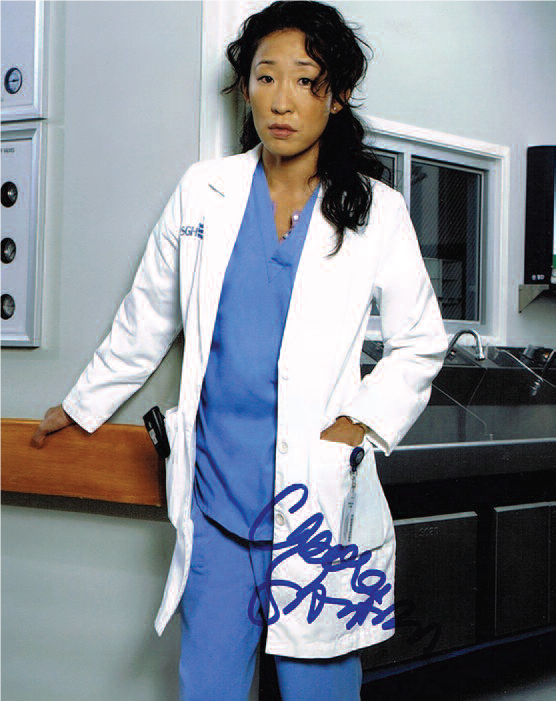
Courtesy of Upper Case Editorial Services
SO: It was never said or expressed formally. The writers and [series creator] Shonda Rhimes found a way of telling this story that just worked. It is basically a classic storyline. There are five acts, each person has a medical issue, and a lot of the time these medical issues reflect what is going on with the characters. I will say, like, at minute 47 you’re going to cry. There’s something about our show that makes people cry. People have a lot of emotional release watching our show. One thing that the show does well in a stylistically different way from any one else’s, is its ability to do comedy and high drama at the same time—within a scene, or within an episode. I think it’s really skillful.
EDGE So when Katherine Heigl’s character, Izzy, lost her husband, we see her baking copious amounts of muffins.
SO: Yes. The way that Izzy deals with her grief is by baking and baking and baking. Inherently, you have a lot of comedy in that. You sustain comedy, comedy, comedy, and then you drop in for the painful truth of it. There has always been that great mix.
EDGE What aspects of the Cristina Yang character are different from you personally?
SO: Cristina Yang is not as emotionally intelligent as I think I am. She is emotionally stunted and anti-social. I don’t consider myself to be either of those things. This is why I wanted to play her so much. Now, as a result of her friendship with Meredith, Cristina has changed. But during the first three years, Cristina was extremely cold emotionally. She had very little compassion or understanding of interpersonal dynamics. I thought that was really interesting to play. My character was so deep in her head. But I felt that she has always been very fair, and compassionate in her own way. Fairly recently, a person said to me, and this was someone I didn’t know, “I really like Cristina. She’s really compassionate.” And, I thought, “Thank you! Thank you for saying that, because it’s totally true! She is compassionate in her way because it comes from a place of fairness.” It’s what I’ve been trying to build for the past 8 years. Cristina is this unfriendly, driven, cutoff person, but has the capacity for compassion.
EDGE Cristina’s tenacity in her work, do you share that?
SO: Tenacity is probably the clearest commonality between Cristina and myself. Also a sense of purpose. It’s not just about overcoming the obstacles of life, but finding a different or clearer perspective of one’s purpose, which in turn makes that tenacity possible. For me, it wasn’t a “choice”, just more of a sense of purpose. Yes, there were obstacles—whether it be the expectations from where my parents wanted me to go, or from people in the industry who said that I was different. The point is not the obstacles themselves, but the sense of purpose that kept me going. That’s the same tenacity that Cristina has—no matter what, she is driven and clear on what it means to be a cardiothoracic surgeon. Nothing is going to stop her from getting there.
EDGE After hiatus is it hard to jump back into Cristina?
SO: Yes. But it’s not so much Cristina. It’s just going back to work. A part of me wants to say No, it’s easy, that it’s muscle-memory. For example, on Arli$$, for Rita, all I had to do was put on those heels—you know, the “costume”—and then the physicality would come back. The comedy would be there because it had so much to do with the physicality.
EDGE You mentioned emotional intelligence. Which Grey’s Anatomy character would you say has the highest EQ?
SO: It’s got to be Bailey or Meredith. Meredith? I’d say Meredith. Cristina would score low on that. Meredith. Meredith one, Bailey two.
EDGE In the movie Sideways, there were four charismatic actors making a very strong movie. Does that make it harder to nail a scene, or easier?
SO: Easier! If you’re working with great actors who also happen to be wonderful people—because that’s not always the same thing—it’s easier. That was definitely one of the highlights of my career. Everyone was good. Every crewmember, every actor, everyone was working at 100 percent. It was a good time, and you can tell on-screen that everyone was having a good time, not just the actors.
EDGE Did you have any idea how well received that movie was going to be?
SO: No, not until I saw Merlot plummet—I really do feel that movie helped to put Pinot on the map!
EDGE Did you know how to ride a motorcycle before you got the part of Stephanie?
SO: I had to learn it and I was terrible at it. I think I almost killed people. At least the scene where I ride off and Thomas Hayden Church is on the back of my bike, I nailed that scene. You only have to nail it once.
EDGE Have you been on a motorcycle since?
SO: No. I would not trust myself on one.
EDGE At that point in your career, most people had known you as Rita, the beleaguered assistant in the HBO series Arli$$. Between the cast and the various sports celebrities on the show, it must have been a crazy set.
SO: My boyfriend at that time would come home and I would tell him who I’d worked with that day and he was like WHAT! I didn’t know anything about sports. All I knew was that some famous sports person was coming into town and there’s a lot more people on set.
EDGE Someone really tall must be a basketball player…someone really big must be a football player….
SO: Seriously, it was like that.
EDGE Did any of them demonstrate any acting ability?
SO: Not that I remember. Professional athletes are athletes, they are not actors. Maybe Laila Ali. I had a scene with her, and she was good.
EDGE Some actors develop characters from the outside-in, and some actors go from the inside-out. Which way do you create your characters?
SO: Probably inside-out. But you have to be able to do both. For example, I have to pretend to be a doctor and that’s all outside-in. That has to do with practicing cutting, and handling the surgical equipment and things like that. My experience as a dancer really helped at outside-in, because you learn through the body how to connect to the character.
EDGE Your first major role was playing Evelyn Lau in the film The Diary of Evelyn Lau. It must have been brutal playing such a tortured soul when you were so young yourself.
SO: I put myself through a lot to play that character. I slept for two months after filming. I had no idea how to control my output. So, I gave everything. It had to do with a lack of experience. Those were the early days. I didn’t know yet that, if one continues giving like I did with Evelyn Lau, one is going to have a breakdown. I have much more skill now. That goes back to the whole inside-out, outsidein thing, being able to build a character more from the outside-in. Evelyn Lau was definitely inside-out. I think for one’s health—both physical and mental—if you have to play a Thai prostitute who is a drug addict, a young actor might think, “Oh, I really have to be a prostitute and do drugs.” No, you don’t. You can just act it. That was the most important creative experience of my life.
EDGE Is fame anything like you thought it was going to be?
SO: No! Can I tell you? Honestly, it was probably one of the most traumatic events in my life. And, ultimately, I think it’s detrimental to being an artist. There’s a lot of struggle. If you want to be famous, awesome! But if you want to continue being an artist, I think fame is a hindrance.
EDGE Why?
SO: Your ability to be authentic is compromised. Fame is detrimental to one’s true artistry because that artistry comes out in the privacy of one’s being with one’s soul— when your soul feels safe in its surrounding to be free, to be authentic. Fame is a heavy, heavy cloak. In my case, I had a tremendous amount of struggle around that feeling of “threat.” There was a period of time when people would be sitting outside my house. How you manage that feeling of threat can go everywhere. It can go into your relationship, go into how you see yourself, and it can go into bad behavior because you start losing control over your privacy in your life. Yet no one’s pointing a gun at you. There’s no one actually “threatening” you. So at the same time you feel like your feelings are unjustified. I’ve thought about this a lot and I have no idea how people who are really famous are able to live and walk around, because they can’t just walk around. I feel that people—especially young people—cannot possibly comprehend the consequences of fame, of not being free. You have to manage your relationship with fame so you can continue to work and still be in the public eye. A lot of people can’t handle it and they leave.
EDGE How has the smartphone generation changed the nature of fame?
SO: Exposure has increased so much. When someone takes a photograph of you when you don’t want them to, it’s denying you “choice.” Because you’ve reached a certain status, you don’t get to have the right to protect your privacy, to not be followed, to have a big fat fight with your spouse in public without it being revealed.
EDGE Fame happened for you organically. You weren’t seeking celebrity, yet that is what you have to deal with now.
SO: It makes me kind of furious that somehow “actor” became synonymous with “celebrity.” I’m a crafts person. I’m an artist. And somehow my total is lessened because of celebrity.
EDGE What’s your take on the roles that are available for women today?
SO: For women, television is our most powerful medium. There are more parts on television for women, and more opportunities for people who are interested in telling a story about a woman. Our show, it’s a woman’s show. Kiera Sedgewick’s show, The Closer, is a woman’s show. Nurse Jackie is centered around Edie Falco. Weeds is centered around Mary Louise–Parker. United States of Tara is centered around Toni Collette. Female cop shows, female buddy shows—there’s more opportunity for women in television. I think that’s a place we need to continue developing. Also, as a woman who is non-white, television has been better for me than film.
EDGE Twenty years ago the ratio of quality male to female roles was around 20:1. How would you explain the up-tick in the number of women’s roles in television?
SO: It must have something to do with the rise of women’s economic power. Classically, women run the finances of the house. If you are in the period of time when you have the most money, let’s say 30 to 50, chances are you’re building your family, so you spend a lot of time at home. You don’t go out. If women are watching television and you want to sell stuff to the household, then you sell it to the woman. That’s what is driving this change. That’s where the industry has more interest and support to do shows that are centered around strong female characters. And the rise of the stronger female character is more prevalent in television than in film. Film is basically all rebooting comic books, and all action movies—it’s about men…plus a young, pretty girl.
EDGE Is there nobility in your industry?
SO: Of course! The business has artists in it; it can’t run without artists. It can’t run without the people who are coming up with the ideas. And there are people who are not on the creative side, who are on the business side, who strive to work with dignity and fairness. Sometimes people slam this town. I’m not saying that all artists are noble—because, lord, they are not—or have integrity. But the best of the best people live in this town. They are creative people who produce great work, who live here and have a strong work ethic. Nobility does exist, but what’s more important is that you make it exist.
EDGE You’ve talked in the past about going into the arts when your parents had hopes for a career in science or medicine. What is your advice on how parents should handle a child saying thanks for the education, but I really want to be in the arts?
SO: Good luck (laughs). I’d say you challenge them on why they want to go. I have a feeling, based on a lot of things going on in this society and pop culture, that the desire to be famous is pushing a lot of kids into either singing or wanting to be in the movies. That’s all fun and good; people come into this business for a bunch of reasons. But it’s so hard to be in the arts. I‘ve always said to people, “You are going to be miserable. Choose whether you’re going to be miserable doing it, or whether you’re going to be more miserable not doing it.” Try to reach out to see what the true motivation is for your child to leave everything behind to pursue the arts. If it’s real, there is nothing you can do to stop it. There was nothing my parents could do to stop it. So don’t challenge them on doing it, just ask Why? If the answer is To be famous, then they could be wasting their youth, their beauty…and chasing a big, empty ghost for a long time.
Editor’s Note: J.M. Stewart lives and works in the Los Angeles area. She interviewed Joe and Gia Mantegna for EDGE last fall.

